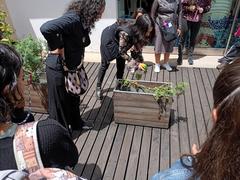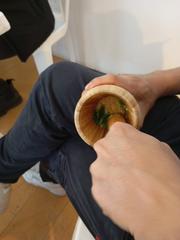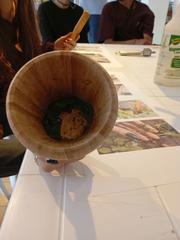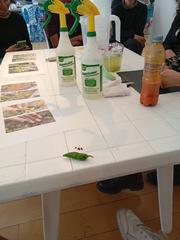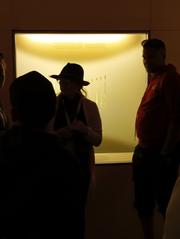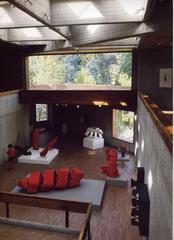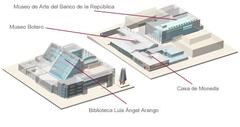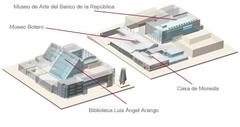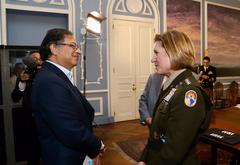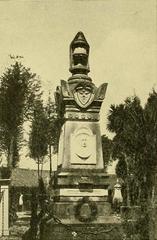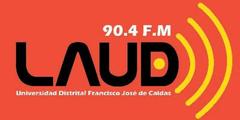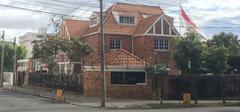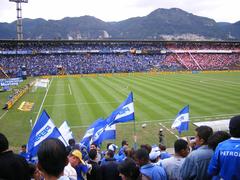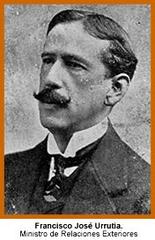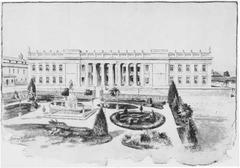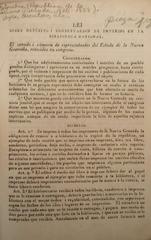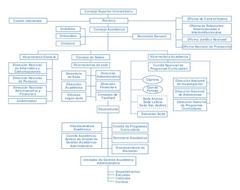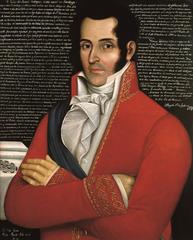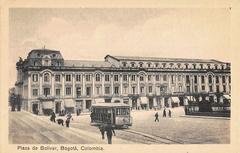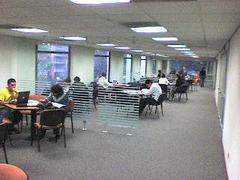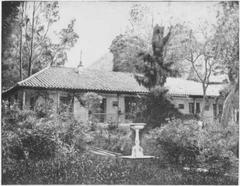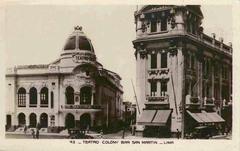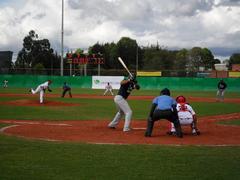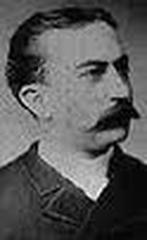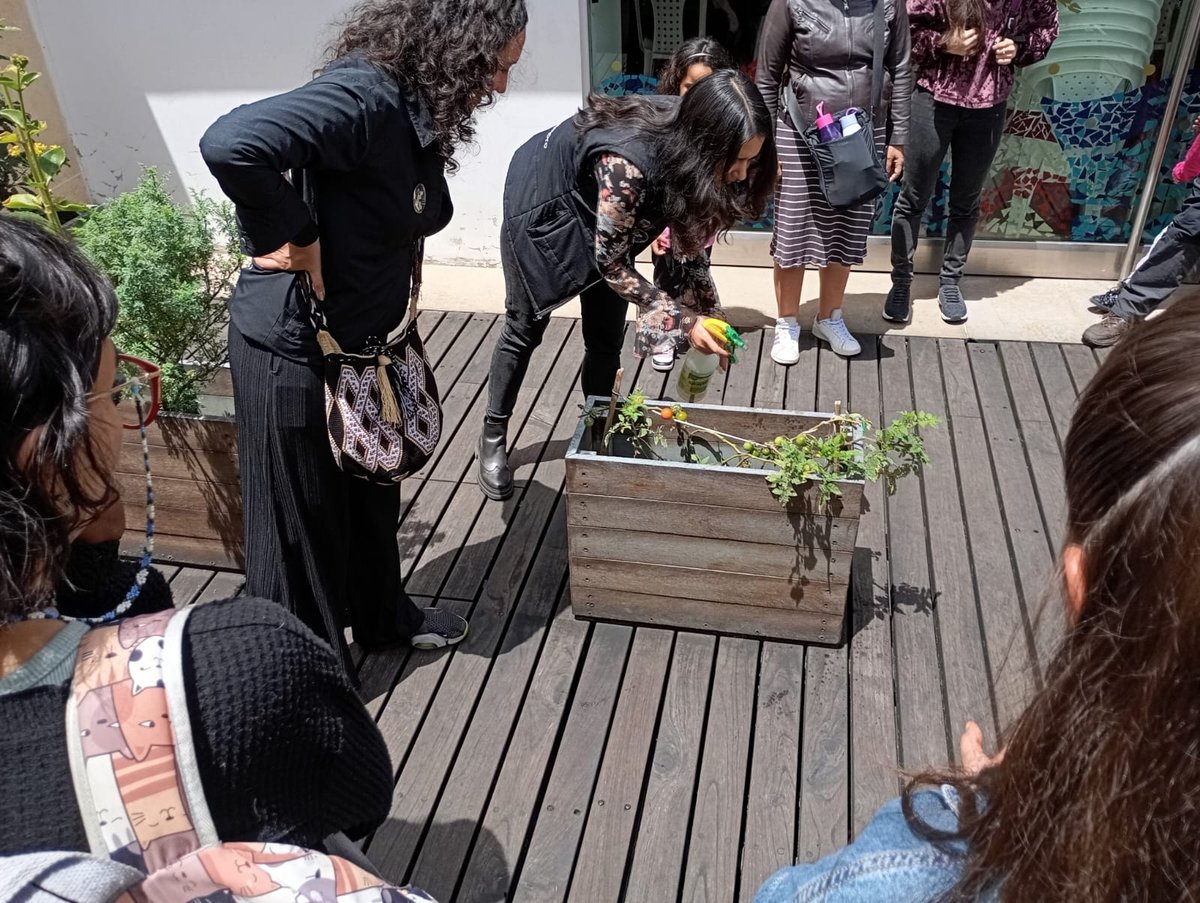
Museum of Gold Bogotá: Visiting Hours, Tickets, and Historical Sites Guide
Date: 14/06/2025
Introduction
Nestled in Bogotá’s historic La Candelaria district, the Museo del Oro (Museum of Gold) stands as Colombia’s premier showcase of pre-Columbian goldwork and indigenous artistry. Founded in 1939 by Banco de la República, it is home to the world’s largest collection of pre-Hispanic gold artifacts, with over 55,000 pieces that illuminate the technological prowess, spiritual beliefs, and social structures of Colombia’s ancient cultures. The museum’s most celebrated treasures include the Muisca Raft, which illustrates the legendary El Dorado ritual, and the Poporo Quimbaya, a symbol of national heritage. Through thoughtfully curated exhibits, interactive experiences, and a focus on accessibility, the Museo del Oro offers an immersive journey into Colombia’s golden legacy.
For the most up-to-date visiting hours, ticket details, and event information, consult the Museo del Oro official website and Bogotá’s tourism portals (Visit Bogotá).
Table of Contents
- Introduction
- Cultural and Historical Context
- Practical Visiting Information
- Highlights and Exhibitions
- Visitor Experience
- Nearby Attractions
- Frequently Asked Questions (FAQ)
- Conclusion and Call to Action
- References
Cultural and Historical Context
Pre-Columbian Goldwork and Indigenous Cultures
The Museo del Oro houses over 34,000 gold and alloy objects, alongside approximately 25,000 other artifacts made from ceramics, stone, bone, shell, and textiles, forming the largest collection of pre-Hispanic metallurgy in the world (Bogotá Government; Medellin Guru). The museum’s galleries are organized by region and culture, allowing visitors to appreciate the diversity of Colombia’s indigenous societies—including the Muisca, Quimbaya, Tairona, Calima, Tolima, Zenú, and others (Medellin Guru). Each group developed unique metallurgical techniques and artistic styles, often using gold as a medium to express beliefs about the cosmos, fertility, power, and the afterlife (Arepas del Gringo).
The Legend of El Dorado
A central theme of the museum is the myth of El Dorado—a legendary city or king covered in gold that lured Spanish conquistadors into the Andes (Cartagena Explorer). The Muisca Raft (Balsa Muisca), a stunning gold votive piece, depicts the ritual ceremony at Lake Guatavita where the Muisca chief, adorned in gold dust, made offerings to the gods. This artifact is emblematic of Colombia’s mythical past and is one of the museum’s most iconic pieces (Bogotá Government).
Symbolism and Social Functions of Gold
In pre-Hispanic Colombia, gold was not used as currency but served as a powerful symbol of spiritual and political authority. Expert goldsmiths employed techniques such as lost-wax casting, hammering, and filigree to create ceremonial objects, jewelry, and regalia (Arepas del Gringo). Objects like the Poporo Quimbaya—a ceremonial vessel associated with coca leaf rituals—demonstrate the intertwining of material skill and spiritual meaning. Gold’s luminosity was seen as an earthly manifestation of the sun, central to indigenous cosmologies (Bogotá Government). Goldwork also marked social status and accompanied elites in burial rites, reinforcing community hierarchies and beliefs in the afterlife (Cartagena Explorer).
Preservation, Research, and National Identity
Founded in 1939 and opened to the public in 1959, the museum’s mission is to preserve Colombia’s indigenous heritage and foster national identity (Bogotá Government). Its collection has grown through archaeological research, donations, and the recovery of looted artifacts. With bilingual exhibits, guided tours, and temporary exhibitions, the museum promotes intercultural dialogue and challenges stereotypes (Medellin Guru). The Museo del Oro is internationally recognized, having been named one of the world’s best history museums by National Geographic in 2018 (National Geographic), and operates regional branches across Colombia for broader cultural outreach (Medellin Guru).
Practical Visiting Information
Visiting Hours and Tickets
- Days Open: Tuesday to Sunday
- Hours: 9:00 AM – 6:00 PM (last entry at 5:30 PM)
- Closed: Mondays and select public holidays
- General Admission: ~4,000 COP (approx. $1 USD)
- Discounts: Students, children, and seniors receive reduced rates; free admission for children under 12 and on Sundays/public holidays
- Purchasing Tickets: Tickets are available at the entrance and, in some cases, online via the official website or Bogotá tourism portals
Accessibility and Visitor Amenities
The museum is fully wheelchair accessible, featuring ramps, elevators, and adapted restrooms. Bilingual signage and exhibit texts are provided throughout. Audio guides and brochures are available in multiple languages. Lockers are offered for personal belongings, as large bags and backpacks are not permitted in exhibition halls. Security staff are present to assist visitors and safeguard collections.
Food, Beverage, and Gift Shop
A café on the lower level serves Colombian coffee and light snacks, and the gift shop near the entrance offers gold replicas, jewelry, books, and cultural souvenirs.
Getting There
The Museo del Oro is centrally located at the corner of Carrera 6 and Calle 16 in Parque Santander, a short walk from Plaza Bolívar. It is easily accessible by TransMilenio bus (Museo del Oro station) and taxi or ride-sharing services, though parking is limited.
Highlights and Exhibitions
Gold Artifacts and Iconic Pieces
The museum’s collection includes over 55,000 artifacts, with 6,000 on permanent display (Colombia Travel). Highlights include:
- Muisca Raft (Balsa Muisca): A masterpiece of lost-wax casting, depicting the legendary El Dorado ceremony.
- Poporo Quimbaya: A ceremonial lime container from the Quimbaya culture, exemplifying both technical skill and ritual significance.
- Tunjos: Small votive figures used in Muisca religious offerings.
- Breastplates, masks, and jewelry: Elaborate objects symbolizing elite identity and spiritual beliefs.
Thematic and Regional Galleries
Exhibitions are organized by theme and culture, with permanent halls dedicated to:
- The Work of Metals: Metallurgical origins and techniques
- People and Gold in Pre-Hispanic Colombia: Social and religious roles of gold
- Cosmology and Symbolism: Spiritual and mythological interpretations
- The Offering Room: Immersive recreation of indigenous ceremonies, featuring the Muisca Raft
Galleries also display ceramics, stone tools, textiles, and organic materials to contextualize daily and ritual life.
Temporary and Special Exhibitions
The Museo del Oro hosts rotating exhibits on archaeological discoveries, contemporary Colombian art, and cultural themes. Renovated spaces, such as the Sala de la Ofrenda (Offering Room), use multimedia displays to enhance engagement.
Visitor Experience
Guided Tours and Multimedia
Guided tours are offered in Spanish and English, providing deeper insights into the collection. Tours can be booked online or at the museum entrance. Interactive touchscreens, audio guides, and documentary films are available throughout the museum (Nomadic Matt).
Interactive and Educational Spaces
The Exploratorium on the fourth floor features hands-on exhibits and multimedia presentations, ideal for families and school groups.
Photography and Media Policy
Photography is permitted in most areas without flash or tripods. Some rooms, such as those containing mummies, may prohibit photography—please respect posted signage.
Nearby Attractions
After visiting the Museo del Oro, explore Bogotá’s historic core. Notable nearby locations include:
- Plaza Bolívar: The city’s main square, surrounded by historic buildings
- Botero Museum: Featuring works by Fernando Botero and international artists
- Casa de la Moneda: Showcasing Colombia’s monetary history
- La Candelaria: A vibrant neighborhood with colonial architecture, cafés, and street art
Frequently Asked Questions (FAQ)
Q: What are the Museo del Oro visiting hours?
A: Tuesday to Sunday, 9:00 AM – 6:00 PM; closed Mondays.
Q: How much does admission cost?
A: General admission is approximately 4,000 COP; free on Sundays and public holidays.
Q: Can I buy tickets online?
A: Tickets are available at the entrance; online sales may be available via the official website.
Q: Is the museum accessible?
A: Yes, the Museo del Oro is fully accessible for visitors with disabilities.
Q: Are guided tours available?
A: Yes, in both Spanish and English; booking in advance is recommended.
Q: Is photography allowed?
A: Yes, except where otherwise indicated.
Q: Is the museum suitable for families?
A: Absolutely—interactive exhibits and educational programs engage all ages.
Q: What are the best times to visit?
A: Weekday mornings are less crowded; Sundays are free but busier.
Conclusion and Call to Action
The Museo del Oro is not only a treasure trove of Colombia’s pre-Hispanic art and technology but also a living center of education and cultural identity. With world-class exhibitions, accessible facilities, and engaging visitor experiences, it stands as an essential stop for anyone exploring Bogotá’s historical sites. Plan your visit by checking current hours and ticket options, and enrich your journey with guided tours and multimedia resources.
Download the Audiala app for guided audio tours and up-to-date event alerts. Stay connected by following the Museo del Oro on social media and explore related articles for more travel inspiration.
For additional information, see the Museo del Oro official site and Bogotá’s tourism guides (Colombia Travel).
References
- Museo del Oro Official Site, 2025, Banco de la República (https://www.banrepcultural.org/museo-del-oro)
- Colombia Travel, 2025, Gold Museum Bogotá: Treasure Trove in Capital (https://colombia.travel/en/blog/gold-museum-bogota-treasure-trove-in-capital)
- Visit Bogotá, 2025, Museum of Gold Bogotá (https://visitbogota.co/en/atractivo/all/gold-museum-all-262)
- Bogotá Government, 2025, Visit the Museo del Oro (https://bogota.gov.co/que-hacer/cultura/planes-en-bogota-visita-el-museo-del-oro-durante-el-2025)
- Medellin Guru, 2025, Museo del Oro Overview (https://medellinguru.com/museo-del-oro/)
- Cartagena Explorer, 2025, Bogotá Gold Museum Guide (https://www.cartagenaexplorer.com/bogota-gold-museum-guide/)
- Arepas del Gringo, 2025, Exploring the Stunning Gold Museum in Bogotá (https://arepasdelgringo.com/exploring-the-stunning-gold-museum-in-bogota-colombia-a-tourists-guide/)
- National Geographic, 2018, Best History Museums in the World (https://www.nationalgeographic.com/travel/article/best-museums-in-the-world)
- Nomadic Matt, Bogotá Travel Tips (https://www.nomadicmatt.com/travel-guides/colombia-travel-tips/bogota/)
